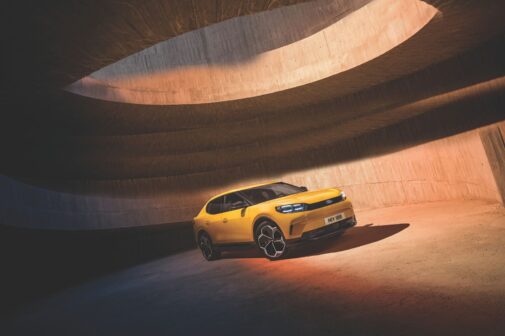Ford Capri 1969
In 1969, the Ford Capri was a fastback coupé body style with sleek, aerodynamic lines that looked like they were sculpted by a wind tunnel with a flair for the dramatic. Essentially, it was the Mustang’s European cousin — a car for those who wanted American muscle with a bit of continental flair. The Capri was Ford’s answer to Europe’s craving for a sporty, stylish coupé without the hefty price tag.
It was positioned as an affordable performance car, accessible to the masses yet desirable enough to make the neighbours jealous. The long hood, short deck, and low-slung profile gave it an aggressive stance, while the raked rear window and tapered roofline added a touch of sophistication.
The Capri was a true globetrotter, as its journey began at the assembly plants of Halewood in the UK, Saarlouis and Cologne in Germany, with additional units rolling off the lines in Belgium.
It wasn’t just a pretty face – it had racing chops too. The RS2600, with its Weslake-engineered 2.6-litre Cologne V6 with Kugelfischer fuel injection, was a terror on the track, winning the European Touring Car Championship and proving it was more than just a show pony.. The
Capri was a blockbuster hit for Ford, selling nearly 1.9 million units throughout its production run. From its debut in 1969 until its discontinuation in 1986, the Capri captivated the hearts of drivers around the world.
Anyone over 40 might need a moment to recover when they see Ford’s new Capri. “That’s not a Capri, though, is it?” they’ll say, before launching into a nostalgic rant about long bonnets and petrol fumes. The new Capri is purely electric, which might require some suspension of disbelief. It’s as if Ford took the classic Capri, dunked it in a vat of eco-friendly juice, and emerged with a five-door, semi-SUV that runs on electrons.
Sure, it’s called Capri, and it has a vaguely familiar ‘dogbone’ front end, but that’s where the nostalgia ends. Underneath, it’s a reworked Volkswagen ID.5, thanks to Ford’s deal with Volkswagen to use their ID platform.
Currently, there are two ‘extended-range’ models. The base version is a rear-wheel drive with 284 bhp from a 77 kWh battery that promises 628 km of range and a 0-100 kph sprint in 64 seconds. For those who want more zap, there’s the 336-bhp-all-wheel-drive version that does the sprint in 5.3 seconds
The 77-kWh version supports 135-kW max DC charging, while the 79-kWh version boasts 185 kW. Translation? You can juice up from 10 per cent to 80 per cent in under half an hour, making long road trips a breeze.
















